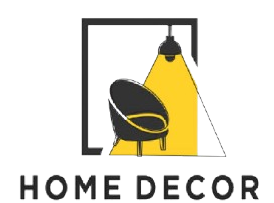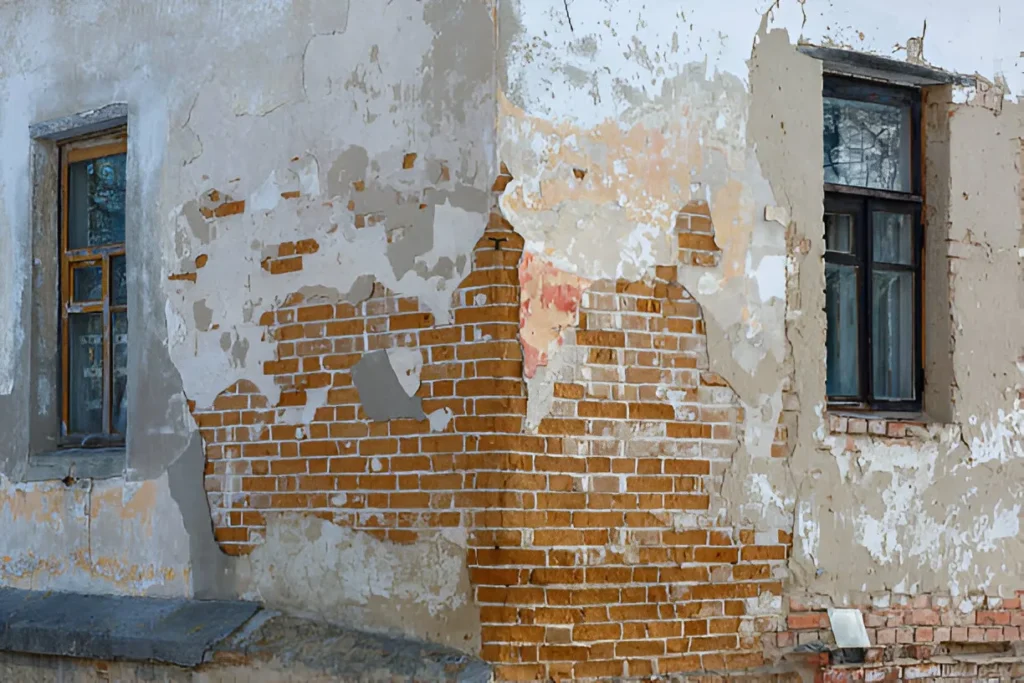Here at Behind Decor, we love talking about the fun stuff: the perfect shade of sage green for your accent wall, the latest in sustainable flooring, and how to arrange your bookshelf by color. But today, we need to talk about something less glamorous, yet infinitely more critical: the horizontal crack in your foundation.
Think of your home’s foundation as the silent, strong sibling of the family. It doesn’t demand attention like a sparkling new backsplash or a statement light fixture. It just does its job, holding everything up, day in and day out. So, when it does show a sign of distress—like a horizontal crack—it’s not being dramatic. It’s sending a Mayday signal. Ignoring it is like ignoring a check engine light because you’re too busy choosing a new playlist. The music might be great, but you’re risking a catastrophic breakdown.
What Exactly is a Horizontal Foundation Crack?
Unlike the common, often benign vertical hairline cracks that result from concrete’s natural curing process, a horizontal foundation crack is a different beast. It’s a crack that runs, well, horizontally across your foundation wall, often bowing inward along with it.
These cracks typically occur in poured concrete or concrete block (cinder block) basement walls. They are a telltale sign of excessive lateral (sideways) pressure from the soil outside. Essentially, the ground is pushing against your foundation wall with so much force that the wall is beginning to buckle and break.
Why You Should Worry: The Science Behind the Crack
To understand why a horizontal foundation crack repair is so urgent, you need to understand the forces at play.
The soil surrounding your foundation is not just passive dirt. It contains moisture. When it rains or snow melts, that soil absorbs water like a sponge, becoming heavier and expanding. This phenomenon is known as hydrostatic pressure. In the winter, this water can freeze. Since water expands when it freezes, the pressure against your foundation wall increases exponentially.
Your foundation wall is designed to handle a tremendous amount of vertical, compressive weight (holding up your house). However, it is not nearly as strong when it comes to resisting this sideways, bending pressure. A horizontal crack is the wall’s failure point—its structural integrity has been compromised.
The consequences of ignoring this are severe:
- Water Infiltration: The crack provides a direct pathway for water, leading to a damp, musty basement, mold growth, and damage to your belongings.
- Structural Damage: The inward bowing will worsen over time, potentially leading to a catastrophic failure of the wall. This isn’t a cosmetic issue; it’s a threat to your home’s entire structure.
- Decreased Property Value: An unrepaired foundation issue is a major red flag for home inspectors and will significantly devalue your property and make it difficult to sell.
Horizontal vs. Other Cracks: A Quick Diagnostic Guide
Not all cracks are created equal. Here’s a quick guide from the pros at Behind Decor to help you understand what you’re looking at:
- Horizontal Cracks: The Big Red Flag. Almost always caused by lateral hydrostatic pressure. Requires professional assessment and horizontal foundation crack repair.
- Vertical Cracks: Often caused by concrete shrinkage as it cures or minor settling. While they can sometimes leak, they are generally less severe. However, wide vertical cracks (>1/4 inch) or those that are widening need attention.
- Stair-Step Cracks: Common in cinder block or brick foundations. They follow the mortar lines. While they can indicate settling, if they are wide or accompanied by bowing, they can be just as serious as a horizontal crack.
- Hairline Cracks: Very thin surface cracks. Often cosmetic but should be monitored.
The Bottom Line: If the crack is horizontal, assume it’s serious until a professional tells you otherwise.
The “Why Now?” Common Causes of Horizontal Cracking
Several factors can conspire to create the perfect storm of pressure that leads to a crack:
- Poor Drainage: This is the #1 culprit. Clogged gutters, downspouts that dump water right next to the foundation, and improper grading (sloping towards the house) all channel water directly into the soil around your basement.
- Soil Type: Expansive clay soils, common across much of the USA, absorb a huge amount of water and swell dramatically, generating immense pressure.
- Freeze-Thaw Cycles: As mentioned, frozen soil expands, pushing against the foundation.
- Over-Saturation: A burst irrigation line, a leaking pool, or even just an unusually heavy and prolonged rainy season can oversaturate the ground.
The Professional Toolbox: Methods for Horizontal Foundation Crack Repair
True horizontal foundation crack repair is not a DIY caulk-and-pray job. It requires addressing both the symptom (the crack) and the cause (the pressure). Here are the professional-grade methods used:
Carbon Fiber Strapping: The Modern Standard
This is often the go-to solution for stabilizing bowing walls. Carbon fiber is incredibly strong under tension, far stronger than steel.
- The Process: Carbon fiber sheets and straps are epoxied directly to the foundation wall in a specific pattern.
- How it Works: Once installed, the carbon fiber locks the wall in its current position, preventing any further inward movement. It acts as an external reinforcement, sharing the lateral load.
- Pros: Extremely strong, minimal excavation (installed from the inside), non-invasive, and quick to install.
- Cons: Does not “push” the wall back to its original position; it stabilizes it. The bowing must be within a certain tolerance for it to be effective.
Steel I-Beams (Wall Braces): The Tried-and-True Workhorse
This is a more traditional, but still highly effective, method for horizontal foundation crack repair.
- The Process: Steel I-beams are installed vertically along the length of the damaged wall, anchored to the floor joist above and the concrete floor slab below.
- How it Works: The beams permanently carry the load that the compromised wall can no longer handle, halting any further movement.
- Pros: Incredibly strong, time-tested, and effective for severe bowing.
- Cons: More obtrusive than carbon fiber, taking up basement space and making finishing the basement more difficult.
Wall Plate Anchors: An External Solution
This system addresses the problem from both the inside and outside.
- The Process: A steel plate is installed on the interior wall. A steel rod is run through the wall to an external plate that is buried in the soil outside.
- How it Works: The system is tightened, gradually pulling the wall back to a more plumb position and transferring the load to the external anchor, which is held in place by the weight of the stable soil.
- Pros: Can actually straighten a bowed wall over time.
- Cons: Requires significant exterior excavation, which can disrupt landscaping.
Epoxy and Polyurethane Injections: For the Crack Itself
While the methods above stabilize the wall, the crack itself still needs to be sealed.
- Epoxy Injection: Used for structural bonding of cracks that are not actively leaking. It restores the structural strength of the concrete.
- Polyurethane Injection: A flexible, waterproof resin used for actively leaking cracks. It expands to fill the void and creates a water-tight seal.
A complete horizontal foundation crack repair plan will often involve a combination of wall stabilization (carbon fiber or steel) and crack injection.
Prevention: The Best Form of Horizontal Foundation Crack Repair
The most effective “repair” is the one you never have to make. Here are Behind Decor’s pro tips for preventing hydrostatic pressure:
- Gutter Maintenance: Clean your gutters regularly. Ensure they are free of debris so water can flow freely.
- Downspout Extensions: Your downspouts should discharge water at least 5-6 feet away from your foundation. This is the simplest and most effective thing you can do.
- Proper Grading: The ground around your home should slope away from the foundation for at least the first 5-10 feet.
- French Drains: For chronic water issues, installing a French drain or other perimeter drainage system can channel water away from the foundation before it builds up pressure.
Behind Decor’s FAQ on Horizontal Foundation Cracks
Q: I found a horizontal crack. Is my house going to collapse?
A: While it is a serious structural issue, catastrophic failure is usually a gradual process. The wall will continue to bow and deteriorate over months and years. The time to act is now, not when the situation becomes an emergency.
Q: Can I just fill it with hydraulic cement or caulk?
A: Absolutely not. This is a classic homeowner mistake. This is a structural problem, not a cosmetic one. Sealing the crack does nothing to address the immense pressure that caused it. The pressure will simply find the next weakest point and create a new crack, often making the problem worse. Horizontal foundation crack repair requires a structural solution.
Q: How much does professional repair cost?
A: Cost varies widely based on the length of the crack, the severity of the bowing, the repair method chosen, and your geographic location. Repairs can range from a few thousand dollars for a simple carbon fiber stabilization job to $10,000 or more for extensive bracing or anchoring systems. The only way to get an accurate cost is to get a professional assessment.
Q: Will my homeowner’s insurance cover the repair?
A: Typically, standard homeowners’ policies do not cover foundation repair resulting from settling, soil pressure, or water damage. They may cover damage if the crack was caused by a specific covered peril, like a sudden pipe burst. You must check your specific policy.
Conclusion: Don’t Decorate Over a Disaster
We at Behind Decor believe your home should be a source of comfort and joy, not anxiety. While that horizontal crack in your basement may seem like a world away from choosing the perfect throw pillow, the two are connected. You can’t have a beautiful, safe home without a sound structure underneath it all.
Ignoring this issue is like putting a beautiful frame around a crumbling painting. The longer you wait, the more complex and expensive the horizontal foundation crack repair will become. If you see that telltale horizontal line, take a deep breath, and make the call to a reputable foundation repair specialist. Get a professional evaluation. It’s the only way to get peace of mind and ensure your home, and all the beautiful things you put in it, stand strong for years to come.


